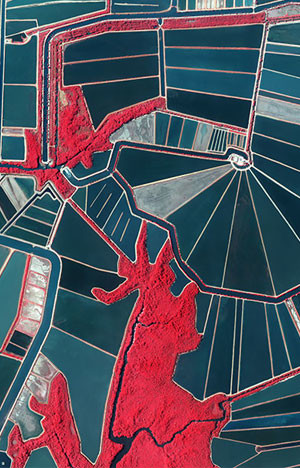The precise, high quality aerial imaging provided by Airborne Sensing is combined with the latest advances in geodesy and photogrammetry in all our project designs to ensure that our completed projects meet or exceed client specifications. With over 20 years of experience in airborne GNSS post-processing, we boast complete project planning infrastructure, an in-house professional geodetic surveyor, direct georeferencing with our GNSS/IMU Position Orientation System (POS), automated aerial triangulation processes with manual oversight, geodetic ground survey capacities, and the creation of Digital Surface Models (DSMs) and orthophotos. We maintain scanning equipment to bring analog film products into digital image processing and photogrammetric environments.

Precise Positioning Experience
Over 20 years ago, Airborne Sensing conducted one of the first airborne GPS projects in Canada, which required the development of a camera interface that sends the mid-point of an exposure signal to the GNSS event-mark-file with an accuracy of 300 microseconds (2 cm). Eccentricity parameters between the antenna phase centre and the optical centre were measured with mm accuracy. Even with single frequency GNSS (then called GPS) technology, ASC proved that accuracies of less than 2 decimetres could be achieved with receivers as far as 400 kms away from the survey area.
Complete Project Planning
Airborne Sensing has established procedures for project planning to ensure that all delivered materials are consistent with client specifications, and our surveys are designed according to the use of active networks in the area and static GNSS observations. With Geographic Information Systems (GIS), we design project elements such as flight lines, project areas, airport bases, active GNSS stations, and existing geodetic control. GIS maps form the basis of photo control operations, flight operations design, and real-time project weather analysis. In consultation with the client, we use GIS to design the project with appropriate considerations such as targets and photo identifiable control. We consult with control and spatial referencing agencies (at the municipal, provincial and federal levels) to determine levels of accuracy available, and how these relate to the project specifications and we determine what active GNSS networks exist in the area (e.g. CORS, CACS, other Virtual Reference System (VRS) networks), computing transformations as requried. The geodetic and photogrammetric products are processed with the following programs: Applanix: Direct georeferencing Inpho: Aerial Triangulation observations BINGO: Aerial Triangulation Grafnav: Kinematic GNSS processing from airborne sensor with no IMU input Grafnet: Static GNSS network adjustments from GNSS base stations PPP: Precise Point Positioning to compute GNSS base station coordinates TRNX: Federal transformation software to transform reference frames from year to year NTV2: National datum conversion software Global Mapper/AutoCAD/Google Earth: GIS to develop map overlays.

Professional Photogrammetric and Geodetic Surveys
Our geomatics manager has over 20 years experience as a professional surveyor for engineering, geodetic and photogrammetric surveys of projects small and large, through North America, Latin America and the Caribbean. Trained in Germany, Canada and the U.S. and a registered Geodetic Surveyor with the Association of Ontario Land Surveyors (AOLS).
Direct Geo-Referencing and Aerial Triangulation
The GNSS/IMU Position and Orientation System (POS) used by Airborne Sensing was developed by the Applanix Corporation. The GNSS/IMU POS collects GNSS positioning data during flight at 1Hz or 2Hz, and IMU data at 200Hz. It measures the position of the camera relative to the centre of the earth to less than 10 cm, as well as the angle of the camera relative to the mathematical surface of the earth to slightly more than 1/1,000 of a degree. Output from this device is then post-processed using GNSS/IMU post-processing and filtering algorithms to compute the xyz coordinates and opk orientation of the camera at the time of exposure.


